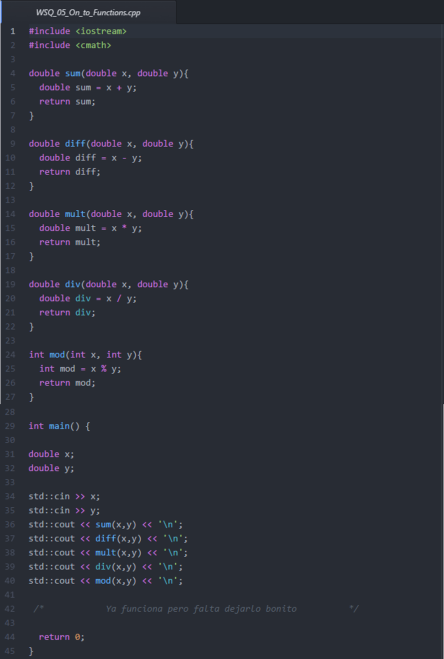--Originally published at Franco TC1017
This program is similar to WSQ 01 but, instead of writing the direct operations, it calculates the sum, difference, product, quotient and residue through functions.
This link was really helpful to write this program. http://www.cplusplus.com/forum/beginner/44001/
I’d like to share my favorite quote from Bertrand Russell.
Mathematics, rightly viewed, possesses not only truth, but supreme beauty—a beauty cold and austere, like that of sculpture, without appeal to any part of our weaker nature, without the gorgeous trappings of painting or music, yet sublimely pure, and capable of a stern perfection such as only the greatest art can show.”
― Bertrand Russell, A History of Western Philosophy.

